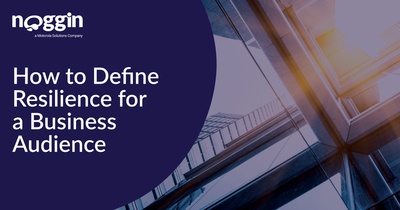Resilience has become a mantra as catastrophic disasters proliferate. Naturally, emergency and emergency management agencies have taken the lead, issuing guidance on how to keep people and communities resilient.
Recent national guidance on staying resilient
In the United States, FEMA recently released National Resilience Guidance (NRG), which aims to promote a more resilient nation through thriving communities within social, economic, environmental, and safe institutional systems.
Of course, the NRG is not the only document of its kind. In August 2024, the Senate Committee Inquiry into Australia’s Disaster Resilience released its long-awaited report, Boots on the Ground: Improving Resilience, to Parliament. This report examines a range of issues affecting disaster and emergency management in Australia.
ISO 22316: Security and resilience
As this type of guidance proliferates, some may wonder if there is similar guidance for businesses.
Indeed, there is. The international standard ISO 22316 provides a framework for strengthening organizational resilience and answers the question: What is a resilient organization?
So what is it? A resilient organization is one that is able to absorb and adapt to changing (business) environments while continuing to achieve the goals that enable it to survive and thrive.
Key characteristics of business resilience
An important characteristic of such organizations is the commitment of senior management to strengthen organizational resilience. In resilient companies, senior leaders understand the following resilience-enhancing principles:
Actions are aligned with a shared vision and purpose Depends on an up-to-date understanding of the organizational context Depends on the ability to absorb, adapt and respond effectively to change Depends on good governance and management Has diverse skills, knowledge and experience supported by leadership coordination across management disciplines and contributions from technical and scientific expertise for effective risk management
Additionally, senior leaders in resilient organizations have demonstrated a commitment to the following resilience-enhancing activities:
Providing appropriate resources to strengthen organizational resilience; Finding mechanisms to ensure that those investments are appropriate to the organization’s internal and external context; and Achieving effective coordination of organizational resilience activities. Developing appropriate governance structures for organizational resilience activities and investing in systems that support the effective implementation of organizational resilience arrangements Assessing and strengthening resilience to support organizational requirements Improving understanding and decision-making Pursuing effective communication for
Managing information and knowledge in resilient organizations
According to this standard, not all responsibility for an organization’s resilience lies with top management. The standard also specifies certain information and knowledge management assumptions.
For one, ISO 22316 encourages the sharing of important experiences. To achieve this objective, organizations must ensure that information, knowledge, and learning are evaluated and extracted from all available sources.
To achieve this, information must be readily accessible, easy to understand, and sufficient to support the organization’s core objectives.
The importance of evaluation in resilient organizations
The standard also emphasizes the importance of assessment activities in resilient organizations. These are activities that provide intelligence and management information about how the organization’s resilience strategy and goals continue to meet the organization’s needs or where there are opportunities for improvement.
In addition to establishing processes to enable continuous measurement, organizations must also align targeted measurement and monitoring activities to the specific attributes of the organization that make it more resilient.
Characteristics of organizational resilience include:
Employees are involved at all levels to promote the organization’s values Creativity and innovation are encouraged to strengthen organizational resilience Employees identify and communicate threats and opportunities to benefit the organization be empowered to take action to bring about
Finally, organizations should also evaluate the effectiveness of their resilience approaches and goals for those attributes. So how do you determine these performance metrics? For more information, check out Noggin’s Executive Guide to ISO 22316.
Learn more


